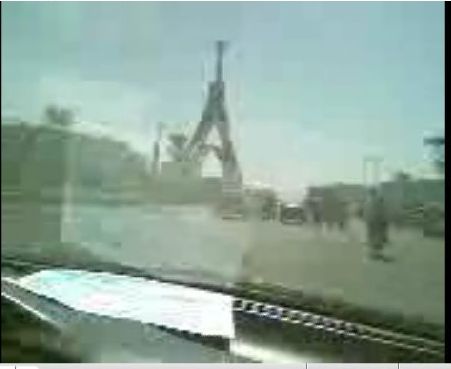TimeOut New York has an interesting piece by Allison Williams on page 47 about war rugs, warrug.com and what makes a good rug.
Author Archives: Kevin
Shayaad Square Image Update
After watching super exciting videos of people driving around Herat and being inspired by a *comment* I am revising my earlier post about the source of this image:
Rather than being Shahyaad Square it appears to be a traffic circle in Herat built in the last 5 years.
Here are some screen shots from youtube.


Textile Museum of Canada’s War Rug Show
Textile expert and war rug aficionado Max Allen has curated an exhibition of his war rugs at Canada’s Textile Museum which opens April 23. There is a story today from Reuters about the show.
“It’s hard to tell what a particular rug is supposed to mean when its history is hidden and its maker is unknown,” said Max Allen, the curator of the exhibit.
“What’s left are the rugs themselves — eloquent anonymous documents of a world turned upside down,” he added in an interview.
….For Allen all of the rugs are important cultural documents about the events that occurred in that part of the world.
“There’s never been anything like them before and they are war from the ground up,” he said.
Latif Khel
Through the trade of regular rugs, and confirmed by ‘the literature’, I’ve learned this type of rug is called Latif Khel.
I am told that in the 1960 and 1970’s Latif Khel were the bulk of the Baluchi produciton, and that Latif Khels were the top quality. Furthermore, that now they constitute a very small percentage of total Baluch sajada production.
First Quality Latif Chel Prayer rug
This rug is extremely fine wool and weave. Note the similarity with color and medallions to this war rug. The flat wool sevedge is the same in this Latif Khel and war rug #1011 also. The weft substitution kilim on this rug, particularly the bottom end, are exclusive to Latif Khel rugs. This rug also has a Seh Mihrabi element in the three white arches at top, as well as four white boxes at top and bottom of field. As a sidelight, now there is a name for Baluchi rugs with the ‘slot car track’ border, like this rug; which is analagous to Kleiber’s Afghanistan page 100.
The field color is midnight blue with a band of abrash. Willful use of abrash will be the subject of a future post.
Second quality Latif Khel rug with Eight Lobed Medallions
First Quality Latif Chel War Rug #1011 (private collection)
Stinger Missile Buyback Ad
Traditional Patterns: Genisis for War Rugs
Here is another example in the continuing series exploring how traditional Baluchi designs have morphed into war rugs.
Some earlier examples of traditional Baluchi patterns morphing into war rugs are: Murray Eilland’s Shindani rug with camel, a round vase of flowers pattern, Checkered Flowers pattern, also called Lateef Khel, Two Deer patern, Vase of Flowers, and a pattern from the Weavings of War exhibition.
National Geographic Society Map of the Day is War Rug
Today, to mark the February 5 ‘Soviet Exodus’ from Afghanistan, The National Geographic Society is using warrug.com’s Rug #426 as its Map of the Day today.
Smithsonian Magazine on War Rugs
Attorney Mark Gold has an oriental rug in his western Massachusetts home that most people call “nice-looking” until he tells them to inspect it more closely. Then they’re enthralled, because this is no run-of-the-mill textile—it’s what is called an Afghan war rug, and what it depicts is somber and stunning: cleverly mixed with age-old botanical and geometric designs are tanks, hand grenades and helicopters. “It’s a beautiful piece in its own right,” says Gold, “but I also think telling a cultural story in that traditional medium is fascinating.”
Natalie Marsh’s Curation of Miami U Museum Exhibition
Marsh’s combination of miniature painting and textiles from the museum’s collection provide excellent context to consider the war rugs.












